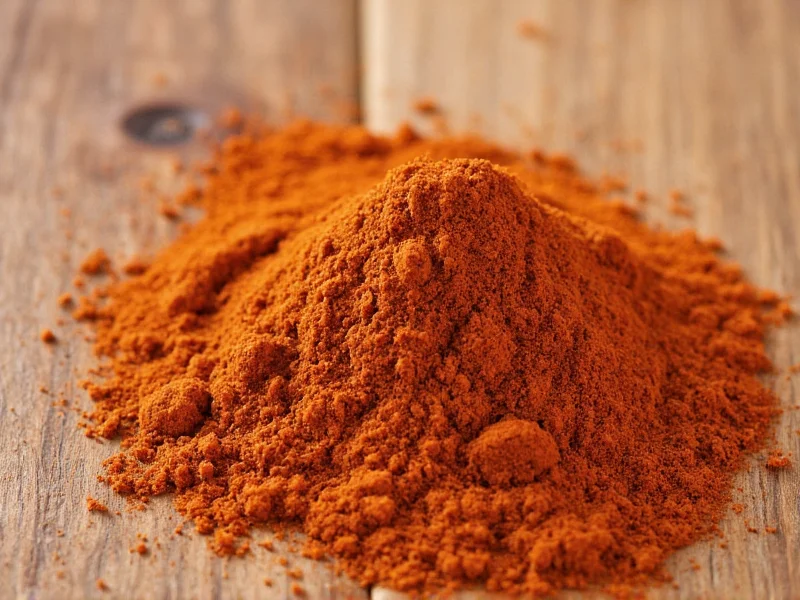Understanding mace substitutes is essential for maintaining recipe integrity when this specialty spice isn't available. Mace, the delicate crimson aril surrounding the nutmeg seed, offers a more subtle, citrusy flavor compared to nutmeg's warmer, sweeter profile. When substituting, consider both the recipe type and desired flavor balance to achieve optimal results.
What Is Mace Spice and Why Substitution Matters
Mace comes from the same tropical evergreen tree as nutmeg but represents the lacy membrane covering the nutmeg seed. This relationship explains why nutmeg serves as the primary substitute, though their flavor profiles differ significantly. Mace delivers a more delicate, slightly citrusy, and floral note compared to nutmeg's robust, warm character. Professional chefs and home cooks alike need reliable mace alternatives when creating traditional recipes from Indian, Moroccan, or European cuisines where mace plays a distinctive role.
Top 5 Mace Spice Substitutes Ranked
When searching for what can I use instead of mace spice, consider these options in order of effectiveness:
| Substitute | Best For | Substitution Ratio | Flavor Notes |
|---|---|---|---|
| Nutmeg (freshly grated) | All applications | 1:1 for ground mace | Warmer, less citrusy; use 15% less for closer match |
| Allspice | Savory dishes, stews | 3:4 ratio (¾ tsp allspice = 1 tsp mace) | More complex, clove-like notes; avoid in delicate recipes |
| Garam masala | Indian cuisine | 1:1.5 ratio (1½ tsp garam masala = 1 tsp mace) | Contains mace plus other spices; adjust other seasonings |
| Cinnamon + Clove | Baking, desserts | ½ tsp cinnamon + ⅛ tsp clove = 1 tsp mace | Sweeter profile; best for sweet applications |
| Cardamom | Scandinavian baking | 1:1 ratio | More floral; works well in light pastries |
Mastering the Mace vs Nutmeg Substitution Ratio
The most common mace spice substitute ratio question involves nutmeg conversion. While a 1:1 ratio works for most recipes, understanding the nuances improves results. For delicate dishes like béchamel sauce or light-colored cakes, use 15-20% less nutmeg than the mace called for, as nutmeg's stronger flavor can dominate. In robust recipes like meat stews or hearty soups, the 1:1 ratio works perfectly.
When working with ground mace substitute options, remember that pre-ground spices lose potency faster than whole versions. If substituting pre-ground nutmeg for ground mace, consider increasing the amount by 10-15% to compensate for flavor degradation. For the most accurate mace spice replacement chart measurements, always use a proper measuring spoon rather than estimating.
Application-Specific Substitution Guidance
Different culinary applications require tailored approaches to how to replace mace in recipes:
Baking and Desserts
For sweet applications like pumpkin pie, gingerbread, or spice cakes, nutmeg remains the ideal best substitute for mace in baking. The warm notes complement other baking spices perfectly. When substituting in delicate pastries like Danish or brioche, reduce the nutmeg by 25% and add a tiny pinch of allspice to mimic mace's complexity.
Savory Dishes and Sauces
In béchamel, cheese sauces, or potato dishes where mace traditionally shines, use freshly grated nutmeg at a 1:1 ratio. For meatloaf, sausages, or pâtés requiring mace's distinctive flavor, combine nutmeg with a whisper of allspice (⅛ tsp allspice per teaspoon of nutmeg) to replicate mace's subtle complexity without overwhelming the dish.
International Cuisine Adaptations
When preparing Indian curries that call for mace, consider using garam masala at a 1.5:1 ratio as your mace alternative for savory dishes. For Dutch speculaas or German lebkuchen, cardamom provides the closest flavor match. In Moroccan tagines, a blend of nutmeg and a pinch of saffron creates an excellent mace replacement.
Pro Tips for Successful Mace Substitution
Professional chefs recommend these techniques when working with mace powder substitute options:
- Toast whole spices before grinding when possible - this enhances flavor complexity and brings you closer to mace's distinctive profile
- Add substitutes later in the cooking process than you would mace, as nutmeg and alternatives benefit from less cooking time
- Adjust acidity - mace's citrus notes can sometimes be enhanced with a tiny squeeze of lemon juice when using nutmeg
- Store properly - keep nutmeg and other substitutes in airtight containers away from light to maintain potency
- Grate fresh whenever possible - pre-ground spices lose 40% of their volatile oils within 6 months
Common Substitution Mistakes to Avoid
Many home cooks make these errors when seeking a mace spice substitute:
- Using pre-ground nutmeg without adjusting quantities (always use 10-15% more than fresh)
- Substituting equal amounts in delicate sauces where mace's lighter flavor is crucial
- Ignoring recipe origin - Indian recipes often need different substitutes than European ones
- Adding substitutes too early in cooking, causing flavor degradation
- Not tasting and adjusting after substitution
When to Seek Specialty Alternatives
For historically accurate recreations of 17th-19th century recipes that heavily feature mace, consider specialty blends. Some artisan spice merchants offer mace-nutmeg blends specifically designed as direct substitutes. While more expensive, these provide the closest approximation when authenticity matters most. For commercial food production, consult with spice specialists about custom blends that match your specific application requirements.











 浙公网安备
33010002000092号
浙公网安备
33010002000092号 浙B2-20120091-4
浙B2-20120091-4